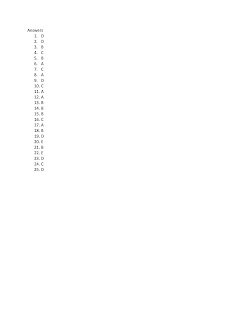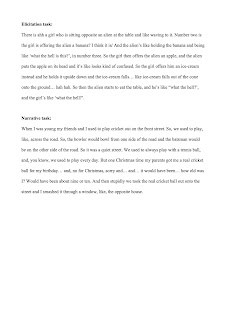Academic English Facilitator. M.Ed (ACU on-line, interrupted). B.Ling.Sc (Macquarie Uni.). Dip. Lang. Spanish (University of Sydney). TESOL+CELTA (International House Sydney.) Film & TV cert. III (Sydney TAFE). Spanish speaking (University of Buenos Aires + 5 years' immersion). Pathways to either Secondary Teaching Spanish (1) & English subject (2) OR other opportunity amid the journey.
Thursday, November 14, 2019
Wednesday, October 23, 2019
Sociolinguistics: Research Report (for MQuni)
Usefulness for ELT: it is important to maintain an outer social context within class. A look into the phonetic nature of language as related to sociolinguistic context gives me a general sense that there are phonetic patterns among individuals, demographics and regions and gives me a sense of how these variations are transmitted.
Bhushan, R., (2011). The sociology of language teaching and learning. Theory and Practice of Language
Studies, 1, 309–311. DOI: 10.4304/tpls.1.3.309-311
Friday, October 11, 2019
Speech Acoustics: Research Report (for MQuni)

Monday, September 30, 2019
Friday, September 13, 2019
Wednesday, August 28, 2019
Sociolinguistics: Multilingualism group video (for MQuni)
In your video, you will need to cover language policies as they pertain to education, politics, the legal system, signage, and any other relevant areas.
In this assignment I explored and critically compared language practices of two different countries (in our case places, as our group was assigned the administrative region of Hong Kong as subject of comparison with Australia), which related to our course, specifically, to policies and planning for national languages and linguistic varieties, which I’m particularly interested in at the moment. I investigated policy for signage in Australia and recorded both the introduction and the conclusion. I was also responsible for editing the video together, with that addition of segments and overlay and voice over provided by the other members.
Having lived overseas, where I also worked within the field of education in that particular country, this assignment, especially, has rekindled my interest in language practices in different societies, in education systems, and in the way they are implemented through policy. At the language institutes in Argentina where I worked, during a period of six years, I observed the way the people valued multilingualism over monolingualism, for themselves and for that country (Rozynski, 2012). I saw the way businesses prioritised L2 acquisition by their employees, and observed that L2 acquisition in primary schools was made obligatory for students by government (BBC Mundo, 2015). In Paraguay, I witnessed four languages being used in varied domains in very interesting ways. In terms of the medium of our assignment, i.e., video, my work experience at SBS and various broadcast and subscription TV companies helped me envision the format more easily, at least, of the ideas the group was having, and how the information might end up being presented. It was great to able to connect these two areas of knowledge, and the prospect of doing it again in the future is more exciting.
Being introduced to, in Janet Holmes and Nick Wilson’s core textbook (2017) for this unit, concepts to do with ‘language shift’, ‘national’ vs. ‘official’ and ‘standard’ vs. ‘variety’ languages, and also, ‘language planning’, enabled me to understand and express my viewpoint better in our conclusion, and follow the contributions of the others. For example, Australia and Hong share an English colonial history, and so it was useful to examine the status for languages each holds, the domains they have evolved in, and the degree of successes today to which they have been maintained, in society and legislation and planning. Keeping the distinction in mind between the British ‘exploitation’ type colonial history of Hong Kong and ‘settlement’ colony of Australia (where English abrogated First Nations' languages, and was, instead, the first language of the majority group), it was, nevertheless, easy to see a contrast between the language situation in both places, how multilingualism can come about, as defined in the textbook, in Hong Kong’s case, through influence of legislation and planning at government level, and dependence on economical development as well (Poon, A., 2010), whereas, in another, it can dominate other languages politically and socially, and result in monolingualism and language death, as in Australia’s case.
A challenge occurred in getting all of our findings, I think, to have an overall flowing structure, a consistent balance between critical and descriptive, and to generally integrate all of our parts in the script. We communicated frequently – daily – in the group chat, to resolve points like this, and the other members were co-operative in arranging to come to the studio, or various areas of campus to record their parts. However, overall I think I achieved what the assignment had set out for me which was to critically compare language policies, and having done so I’ve gained great insight into the state of the language where I live now, and knowledge I can take back to the place I used to live, in Argentina, as an English language teacher.
See:- https://www.bbc.com/mundo/noticias/2015/02/150210_ingles_idioma_aptitud_indice_wbm
Rozynski, M. (2012.12.13) . Lessons from Stephen Krashen and the natural acquisition theory [Blog post]. Retrieved from Web address https://rozynskijournal.blogspot.com/ 2012/12/lessons-from-stephen-krashens-linguist.html
Sociolinguistics: Presentation, A look at language in Australia & Honk Kong (for MQuni)
Students will be allocated to groups of 4-6 within tutorial groups and work together to produce a short (5-10 minute) video that describes multilingual language policies and practices in an assigned country and compares these with Australia
In your video, you will need to cover language policies as they pertain to education, politics, the legal system, signage, and any other relevant areas.
Friday, June 21, 2019
Tuesday, June 11, 2019
Astronomy, Our Place in the Universe: Observatory assignment (for MQuni)
Q1. [10 marks] Make a sketch of part of the night sky in the same direction at two different times on the same night. Record only the brightest objects and try to include the moon or a planet in the view. The times should be separated by at least 1 hour. Include landmarks on the horizon (e.g. a tall tree) so you can note how objects in the sky move. Note the times, date and direction you are facing. Be sure to stand in the same location at both times!

Q2. [10 marks] Repeat Q1, but instead sketch the Southern Cross and pointer star constellations. Mark the location of the Celestial South Pole. Separate the two sketches by at least 1 hour. Be sure to include something like a tall tree in the view as a reference in your sketch.
Q3. [10 marks] Consider interesting astronomical objects you can see from Sydney in the night sky at this time of year.
(a) Briefly define the following deep sky objects: open star cluster, globular star cluster, galaxy, planetary nebula, and binary star.
(b) Give examples of 3 of these objects that are presently visible at night from our location in Sydney. Provide the Right Ascension and Declination coordinates for each target.
(c) For each of the 3 objects from part (b), draw their location in the sky by showing the surrounding constellation of bright stars.
Q4. [10 marks] Look through a telescope at an object in the sky. Describe the object that you observed and draw a sketch of it. Look for effects of “seeing” and describe how this influences what you see.
Q5. [5 marks] Ask nicely to have the automatic tracking of the telescope turned off and describe what you see. Why is this happening?
Q6. [5 marks] Try out two different telescope eyepieces and look at the same object. Describe or sketch what you see.










































